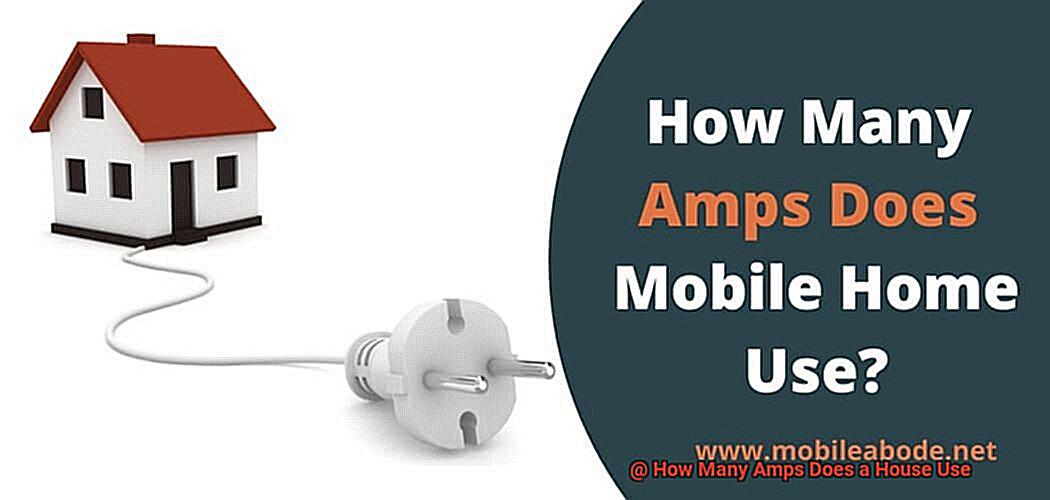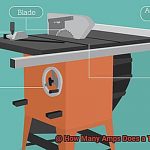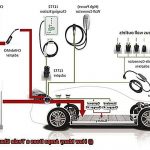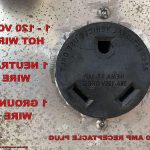Have you ever wondered how much electricity your home consumes on a daily basis? It’s a common question that many homeowners ask, especially those who are conscious about their energy usage and bills. The amount of electricity used by your household is measured in amps, which are units of electric current that determine the flow of electricity into your home. Knowing how many amps a house uses can help you manage your energy consumption, reduce costs, and minimize your carbon footprint.
Think about all the appliances and electronic devices you use around the house – from TVs to kitchen appliances, lighting fixtures to heating and air conditioning systems. Each device consumes a specific amount of current. When combined, these devices determine the total amps used by your home and ultimately affect your overall energy consumption.
But what is the average number of amps used by a house? While this varies depending on several factors such as property size, number of occupants, and daily routines, on average, a typical home uses between 100 to 200 amps. However, this number can significantly vary depending on your specific energy needs.
In this blog post, we’ll delve deeper into how many amps a house uses and what factors affect them. We’ll also provide tips on calculating your home’s energy consumption and share practical advice on how to lower it to save money on utility bills. Get ready to take control of your household’s electricity usage with our expert insights.
What is an Ampere?
Contents
- 1 What is an Ampere?
- 2 Average Amperage Usage in a Typical American Household
- 3 Factors That Affect the Number of Amps Used by a Home
- 4 Calculating Amperage for Specific Appliances and Devices
- 5 Voltage and Wattage as Other Factors in Electrical Usage
- 6 Measuring Your Home’s Total Amperage Usage
- 7 Conclusion
Let me enlighten you. An ampere, also known as an amp, is a unit of measurement that expresses the rate of electric current flow. Its name comes from the French physicist Andre-Marie Ampere, who made significant contributions to the study of electromagnetism in the early 19th century.
To put it simply, an ampere represents how much electrical charge passes through a conductor per second. Imagine water flowing through a pipe, with its rate measured in gallons per minute (GPM). Similarly, the rate of electric current flow is measured in amperes. Just like a larger pipe can accommodate more water flow, a larger conductor can handle a higher amount of electrical current.
However, it’s important to note that amperes don’t necessarily indicate the amount of energy being consumed. Energy consumption is usually measured in kilowatt-hours (kWh), which takes into account both the rate and duration of electricity usage.
Knowing the amperage of various appliances and circuits in your home or building is crucial for managing and maintaining electrical systems. With this knowledge, homeowners can ensure they are not overloading their electrical system and risking damage or fire.
To give you an idea of average amperage usage, a typical American household uses around 100 amps per day. Though during peak usage times such as in the morning when people are getting ready for work or in the evening when everyone is home and using appliances simultaneously, this number can spike to as high as 200 amps or more.
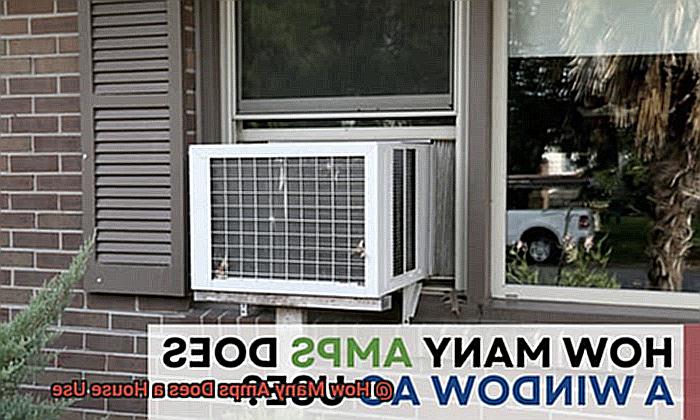
However, keep in mind that while amperage is an important factor in determining electrical usage, it’s not the only one. Voltage and wattage also play a role in overall energy consumption. So, even if a device uses a small amount of amps but operates at high voltage, it can still use up a significant amount of energy.
Average Amperage Usage in a Typical American Household
Think of it like a river flowing through a pipe – just like how the rate of water flow is measured in gallons per minute, amperes measure the rate of electrical current flow.
According to the U.S. Energy Information Administration (EIA), the average American household uses approximately 1,000 kilowatt-hours (kWh) of electricity per month, which translates to an average usage of around 33 amps. However, this number can vary depending on several factors such as the size of your home, the types of appliances and devices you use, and the number of people living in your house.
The biggest energy-consuming appliances in most homes are air conditioning units, heating systems, water heaters, refrigerators, and washing machines. For instance, an air conditioning unit alone can use anywhere from 15 to 50 amps depending on its size and efficiency. Meanwhile, a heating system can use around 20 to 60 amps, and a water heater can consume around 15 to 25 amps.

When it comes to appliances that use less energy, refrigerators and freezers typically use around 2 to 4 amps, while washing machines and dryers can use around 15 to 30 amps depending on their size and energy efficiency rating. Other devices such as televisions, computers, and lighting fixtures generally use less than 1 amp each.
It’s important to note that these are just estimates based on average usage – your actual amperage consumption may vary. To get a more accurate idea of how many amps your home is using, consider installing a whole-house energy monitor or consulting with a licensed electrician.
By understanding your household’s energy usage, you can take steps to reduce your electricity bill and make your home more energy-efficient.
Factors That Affect the Number of Amps Used by a Home
Well, wonder no more. Several factors can influence the number of amps used by a home.
Firstly, the size of your humble abode plays a significant role in determining the number of electrical appliances and devices used. It’s like water flowing through a pipe; the bigger the pipe, the more water it can carry. Similarly, larger homes tend to have more appliances than smaller homes, which consume more energy and require more amps.
Secondly, the age and condition of your electrical system can also impact the number of amps used. If you live in an older home, chances are your electrical system may not be equipped to handle the demands of modern appliances. Overloaded circuits can cause circuit breakers to trip and result in power outages. So it’s always a good idea to ensure that your electrical system is up-to-date and in good condition.
Thirdly, the type of electrical appliances and devices used in your home is another factor that contributes to the number of amps consumed. Large appliances such as air conditioners, refrigerators, and electric water heaters require more energy and amps than smaller devices like lamps or cell phone chargers.
Did you know that even the time of day can affect the number of amps used by a home? During peak hours when everyone is using electricity, there is a higher demand for energy, which means more amps are needed. This can lead to power outages or brownouts, especially during hot summer months when many people are running their air conditioners.
Lastly, weather conditions can also impact the number of amps used by a home. During extreme weather events such as heatwaves or snowstorms, people tend to use more energy to cool or heat their homes. This increased usage can strain the electrical grid and result in power outages.
Calculating Amperage for Specific Appliances and Devices
It’s like being a conductor of an orchestra – you need to know each instrument’s role and how it contributes to the overall sound.
To calculate an appliance’s amperage, you need to know its wattage and voltage. Wattage is the power consumed by an appliance, while voltage is the electrical force that drives the current. You can find these details on the label or manual of each device.
Once you have this information, you can use a simple formula to calculate the amperage: divide the wattage by the voltage. For example, if your air conditioner has a wattage of 5000 and a voltage of 220, then its amperage would be 22.73 (5000/220=22.73). It’s like magic.
However, some appliances have a startup surge that requires more power than their normal operation. This is known as inrush current, and it can last for a few seconds or even minutes. To calculate the total amperage, you need to add their inrush current to their normal operating current.
To identify which appliances are energy-efficient and which ones are energy-guzzlers, it’s essential to calculate their amperage. By doing so, you’ll gain insight into your household’s energy consumption and be able to make informed decisions about which appliances to use during peak hours or when you’re trying to save on your electricity bill.
Remember that different settings or modes on an appliance may have different wattages or voltages, so always check the label or manual for accurate information. Plus, taking this small step of calculating amperage can make a big impact on your wallet and the environment.
Voltage and Wattage as Other Factors in Electrical Usage
Voltage and wattage are like the conductors of a symphony that determine the tempo and volume of your home’s electrical system. These factors play a significant role in determining the amount of amps your house uses, along with the number of appliances and devices used in a home.
Voltage, measured in volts (V), refers to the electrical pressure or force that pushes current through a wire. In simpler terms, it’s like the conductor’s baton, directing the flow of electricity through wires. The standard voltage in most homes in the United States is 120 volts, but some appliances such as air conditioners and electric dryers may require 240 volts to perform their functions effectively.
Wattage, measured in watts (W), refers to the amount of power an appliance or device uses. It’s like the volume control knob on a stereo – the higher the wattage, the more energy an appliance or device consumes. For instance, a 100-watt light bulb consumes more energy than a 60-watt light bulb. However, wattage can vary based on an appliance’s make and model.
To determine the amperage used by an appliance or device, you need to know both its voltage and wattage. This can be calculated using Ohm’s law, which states that amperage (A) equals wattage (W) divided by voltage (V). For example, an appliance with a wattage of 1200 W operating at 120 V would have an amperage of 10 A.
It’s important to note that some appliances draw more amps when starting up than during regular operation. This is known as “inrush current,” and appliances with high inrush currents include refrigerators, air conditioners, and some power tools. Homeowners must consider these factors when calculating overall amperage usage.
Understanding voltage and wattage as factors in electrical usage can help homeowners make informed decisions about their energy consumption. By choosing appliances with lower wattages and monitoring high-inrush current appliances, homeowners can reduce their overall electrical usage and save on energy costs.
Think of it like conducting your own electrical symphony – with the right knowledge, you can create a harmonious and efficient energy usage plan for your home.
Measuring Your Home’s Total Amperage Usage
Understanding your home’s total amperage usage is an essential step in answering that question. It’s like knowing the lyrics to a song; you need to know the words to sing along.
Luckily, measuring your home’s total amperage usage is easy with the help of a clamp meter. Think of it as a conductor’s baton in an electrical symphony, directing and measuring the flow of electrical current without ever touching the wire.
To get an accurate reading, you need to shut off all the electrical appliances and devices in your home. It’s like turning off the music before the performance starts. Then, turn on one appliance at a time and measure its amperage usage using the clamp meter. Record each reading until you’ve measured everything in your home. Finally, add up all the readings to determine your home’s total amperage usage.
Remember, just like a musical performance can have high and low points, your home’s total amperage usage can also vary throughout the day. During peak hours, when everyone is using their appliances and devices, your home’s total amperage usage will likely be higher than during off-peak hours.
Understanding your home’s total amperage usage is like understanding the beat of a song. It can help you identify ways to reduce your energy consumption and lower your electricity bills.
zRYESRObKqA” >
Conclusion
In conclusion, it’s essential to know how many amps your house uses to manage energy consumption and lower electricity bills. Typically, a home uses 100-200 amps based on factors such as size, occupants, and daily routines. However, this number can vary depending on specific energy needs.
Several factors impact the number of amps used by a home, including property size, electrical system age and condition, appliances and devices used in your home, time of day, and weather conditions. Knowing the amperage of different appliances and circuits is crucial for managing electrical systems.
To calculate an appliance’s amperage, you need to know its wattage and voltage. Wattage refers to power consumption, while voltage is the force that pushes current through a wire. Understanding these two factors can help homeowners make informed decisions about energy consumption.
Measuring your household’s total amperage usage is simple with a clamp meter. By understanding energy usage patterns in your home, you can take steps to reduce electricity bills and make your home more energy-efficient.
